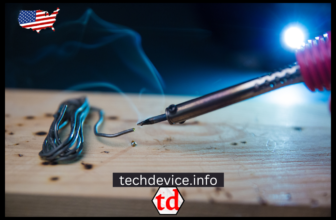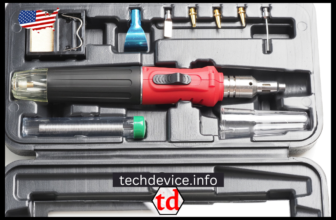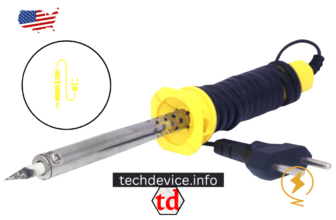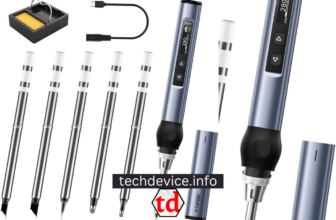How Does a Soldering Iron Work – A Beginner’s Guide
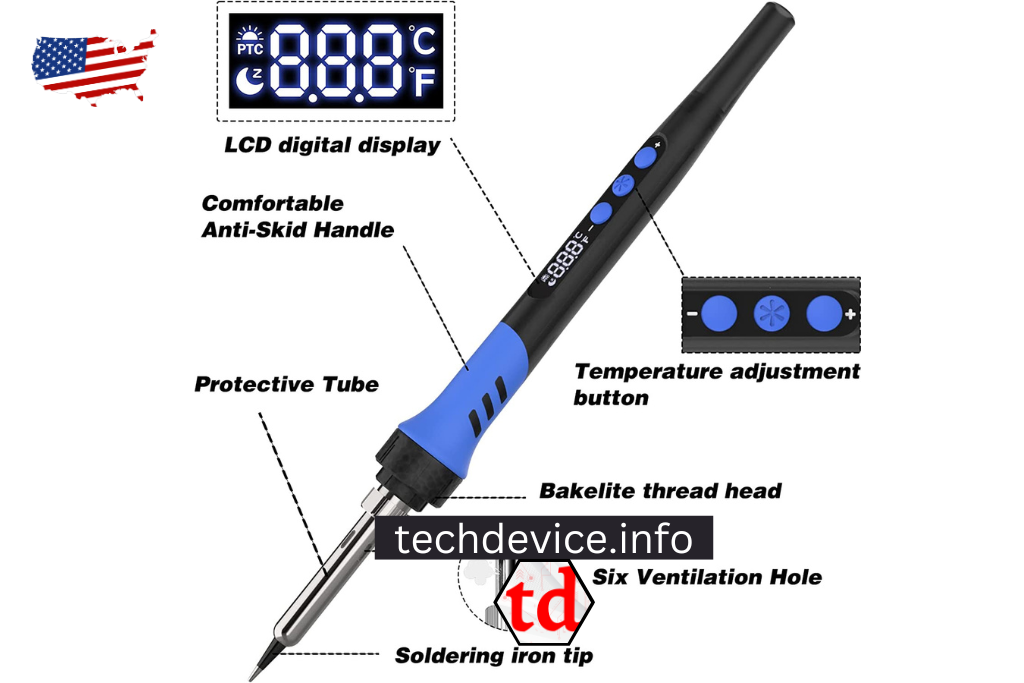
How Does a Soldering Iron Work – A Beginner’s Guide
Learn how a soldering iron works and how to combine two pieces of metal. This article covers the basics of soldering, including tips and ways.
How Does A Soldering Iron Work?
A soldering iron is a hand tool that combines two or more pieces of metal. It does this by melting a metal alloy called solder, which runs into the joint between the pieces and hardens, making a strong and long-lasting bond.
To use a soldering iron, first plug it into an electrical outlet. Allow the iron to heat up for a few minutes until the tip is hot enough to melt the solder. Then, apply a small amount of solder to the iron’s tip. Touch the iron tip to the two pieces you want to join together. The solder will melt and flow between the two pieces, creating a bond.
Once the solder has cooled, the joint will be strong and secure. Soldering irons serve various tasks, including repairing electronic devices, making jewelry, and building models.
Tips for Using Soldering Iron
- Always use a soldering iron that is the correct size for the job. A too-small iron will not heat up quickly enough, and a too-large iron will be difficult to control.
- Always wear safety glasses when using a soldering iron. Molten solder can cause serious eye injuries.
- Never use your bare hands to touch the soldering iron’s tip. The tip can be very hot and cause burns.
- Be careful not to overheat the soldering iron. Overheating can damage the tip and shorten the life of the iron.
- Clean the tip of the soldering iron after each use. It will help to prevent corrosion and oxidation.
You can use a soldering iron safely and effectively with a little practice.
How Does A Soldering Iron Work?
Heating element:
The soldering iron has a heating element that turns electrical energy into heat. Most of the time, this part consists of clay or metal. When you put the soldering iron in and turn it on, an electric current flows through the heating element, making it hot.
Soldering tip:
The part of the iron that touches the parts you want to join is called the soldering tip. It typically occurs from copper or copper covered with iron so that heat can move well. The tip aims to reach and stay at a high temperature.
Controlling the temperature:
Some soldering irons have settings that let you set the temperature to the right level for the job. Some may have a set temperature that works well for most soldering jobs. The soldering iron tip also gets hot when the heated element gets hot. When you touch the tip of the solder, the heat from the tip moves to the solder, causing it to melt. The molten solder can then run between the parts you are soldering to connect them.
Flux activation:
The solder usually has a flux core or a separate flux is used to put it on. Flux is a chemical compound that cleans the soldered surfaces, removes oxides, and helps the solder run. When the solder starts to melt, the flux turns on to do its job and improve the soldering process.
Steps in a Soldering Iron
The first step in soldering is to put the iron tip on the joint where the two parts meet. The junction has subsequently filled with the melted solder. The solder should flow over the joint and cover it evenly, making a strong link. The junction becomes connected as soon as the solder becomes firm.
It’s important to remember that different soldering iron types and uses may have different designs and features. However, the basic way they work stays the same. Use a soldering iron safely to avoid burns, fires, and electronic damage.
Basic Parts of Soldering Iron
There are many different forms and sizes of soldering irons, but they all have the same basic parts:
A handle
The user stops getting too hot due to the handle’s construction, which consists of a heat-resistant material like plastic or wood.
A heating component
Iron or copper, good heat conductors, make the heating component.
A hint
Brass or copper make up the tip of the soldering iron, which quickly melts the solder. It develops to facilitate solder flow into the connection connecting the two components.
To use a soldering iron, you must first plug it in. Wait a few minutes for the soldering iron to heat up until the tip is hot enough to melt the solder. Then, put a little solder on the end of the soldering iron. It will be easy to melt and move the solder.
Ways to Use It
- Hold the soldering iron against the joint between two pieces of metal to join them.
- Put just a little bit of glue on the joint.
- The solder will melt and run into the joint, making a strong bond between the two pieces.
- The joint will be strong and long-lasting once the glue has cooled.
- Here are some tips for using soldering iron:
- When welding, you should always wear safety glasses.
- Never leave a soldering iron unattended.
- Be careful not to touch the soldering iron’s hot tip.
- Always use a clean tip.
- When not in use, keep the soldering iron in a safe place.
Tools like soldering irons are useful for various tasks, including repairing electrical equipment.
- Building computer circuits
- Making jewelry
- Making your things
Soldering is a skill that people of all ages can enjoy because it is fun and useful. You can learn to solder like a pro with a little practice.
Facts about How a Soldering Iron Works
There are two main kinds of soldering irons: gas and electric. The most popular kind is one that runs on electricity.
- An electric current propels them and causes them to get heated fast. Fewer people use gas soldering irons.
- A gas flame fires them and can get hotter than soldering electric irons.
The work you can do with a soldering iron depends on how big and round the tip is. For example, a small, pointed tip is good for work that needs careful, like soldering computer parts. A big, flat tip is good for heavy-duty work like soldering pipes.
It’s important to know how hot the soldering iron is. If the heat isn’t high enough, the metal won’t melt. If the temperature is too high, the solder will melt too quickly, and the joint won’t be strong. Between 350 and 400 degrees Fahrenheit is the best range for soldering.
Tin and lead combine to make the solder. It comes in different sizes and shapes, such as wire, paste, and preforms. What you are doing will determine what kind of solder you use. For example, some electrical tasks need solder that doesn’t contain lead.
Soldering flux is a material that keeps the solder from getting oxidized and makes it easier for the solder to flow. Different kinds of flux exist, such as liquid, paste, and powder. What kind of flux you use will depend on what you’re doing. For instance, the most popular and versatile option is rosin flux.
Conclusion
How does a soldering iron work? When you use a soldering tool, you need to be careful. Always wear safety glasses and an apron to keep from getting burned. Don’t use the soldering iron near things that can catch fire. Never leave a soldering iron unattended. You can use a soldering iron safely and well with a little practice.


